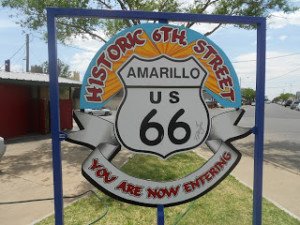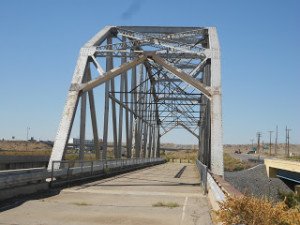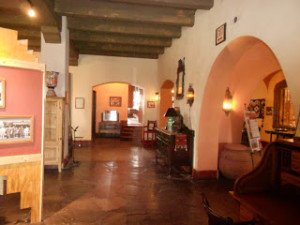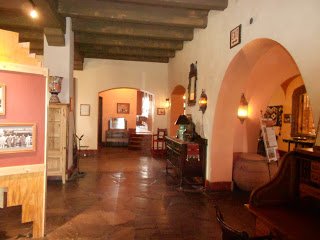Old Route 66
Thank you for reading this post, don't forget to subscribe!The old Route 66 is one of the most historic drives in North America. this highway stretching from Chicago, Illinois to Santa Monica, California in many ways tells the story of the modern day expansion across America’s Southwest. Over the decades portions of Route 66 were altered and with the beginning of the Interstate highway system, a good portion of the Mother Road was lost altogether.
 The western road traveler can still find substantial portions of the old Mother Road in several states. The longest uninterrupted section being found in western Arizona. Many old landmarks remain and the signage you’ll see on the Interstates are pretty good in pointing them out.
The western road traveler can still find substantial portions of the old Mother Road in several states. The longest uninterrupted section being found in western Arizona. Many old landmarks remain and the signage you’ll see on the Interstates are pretty good in pointing them out.
During the heyday of Route 66 travel, motels sprang up right and left. Prior to the Interstate Highway System, Route 66 was the main artery into the southwest and into California. Thousands of people traveled the Mother Road to California during the Great Depression as was chronicled in John Steinbeck‘s 1939 novel, The Grapes of Wrath.
Route 66 was the trail out of the Dust Bowl of the 1930’s and hopefully to a new start and employment in California.

Surviving Landmarks Along Today’s Route 66
Some of the Route 66 landmarks still remaining include bridges, abandoned service This applies to towns and cities all along Interstate 40 from Oklahoma all the way to the West Coast. When you exit the Interstates and take a short drive through many of these towns there is quite a lot of old history to explore. Along this stretch of Interstate 40 you’ll find that the original old route still runs through the center of many towns and cities, usually as main street. This is true even though the Interstate itself passes either north or south of the town.
Theaters
When Route 66 was being developed during the 1920’s, the movie theater industry was expanding. As a result there still remains many old theater buildings along old Route 66 with the type of architecture you don’t see too often today. Some theaters of note along the way include the Kimo Theater on old Route 66 in downtown Albuquerque New Mexico. The Kimo’s art deco style is very unique.
The Kimo design is actually Art Deco blended in to the Southwest style. Many believe that the Kimo Theater is Albuquerque’s most popular landmark. The city purchased the theater in 1977 to keep it from being demolished. There have been several renovations and today the Kimo Theater is open showing films, featuring live plays and is also used for various private and civic functions.

Amarillo Texas also offers an historic old movie theater. The Paramount Theater was located in the southern section of downtown Amarillo about one block off old Route 66. The Paramount Theater was built in 1932. Similar to many large theaters built in this period, The Paramount Theater included a wide-set staircase with covered with maroon carpeting as it curved to the upper balcony seating area. The theater could seat 1,200 beneath a blue sunburst design on the ceiling. The one large screen was behind heavily draped curtains and gold framing. The Paramount in Amarillo charged fifteen cents for admission when it opened for business during the Great Depression. The Paramount Theater building still sports it’s marquee and definitely worth a drive by when passing through downtown Amarillo, Texas. Today the handsome and historic structure serves as an office building.
Grants, New Mexico is also the site of an old rundown theater that was built during the Great Depression in 1937. The theater is found along the main street through town which happens to be old Route 66. Grants is located about 79 miles west of Albuquerque via Interstate 40. The Lux Theater was capable of seating some 500 plus patrons
Much of the structure which is situated in a strip of three buildings is now boarded up but the marquee and old neon tubing remains. The theater was built when a great many people traveled Route 66, many heading west to California looking for employment.
Historic Hotels
East of Flagstaff you’ll find a luxury hotel, La Posada, directly on old Route 66 in Winslow Arizona. The La Posada was originally built by Fred Harvey and the Atchison Topeka and Santa Fe Railroad.It was and still remains a popular and historic destination.
This Route 66 landmark was originally built next to the Winslow train station in 1929. Winslow was chosen as an ideal site for another Harvey House because it’s location in Winslow is a days drive or less from many popular northern Arizona tourist destinations including the Grand Canyon to the west and Navajo Reservation just to the north. The La Posada Harvey House could attract travelers from either the railroad line or old Route 66. The AT & SF railroad operated the hotel for twenty-seven years and then closed it to the public in 1957.

The future of the structure was of course in doubt when the railroad gave it up. The fear of many was that the building might be torn down. Efforts were underway to preserve it. The National Trust for Historic Preservation became aware of the situation and became involved. Fortunately, the La Posada Hotel was purchased by a small group that restored the hotel to it’s grand condition.
The hotel is very popular today with many making it a regular stop when traveling through Winslow. If you travel on Interstate 40, you will enjoy stopping at Winslow and visiting and/or lodging at this historic hotel. If you’re traveling on Amtrak’s Southwest Chief, the train makes a scheduled stop at the hotel.
There’s plenty of interesting sites to see along the old Route 66. If you haven’t driven this historic route yet we recommend it as a fun and educational family trip.
(Article and photos copyright Trips Into History)

